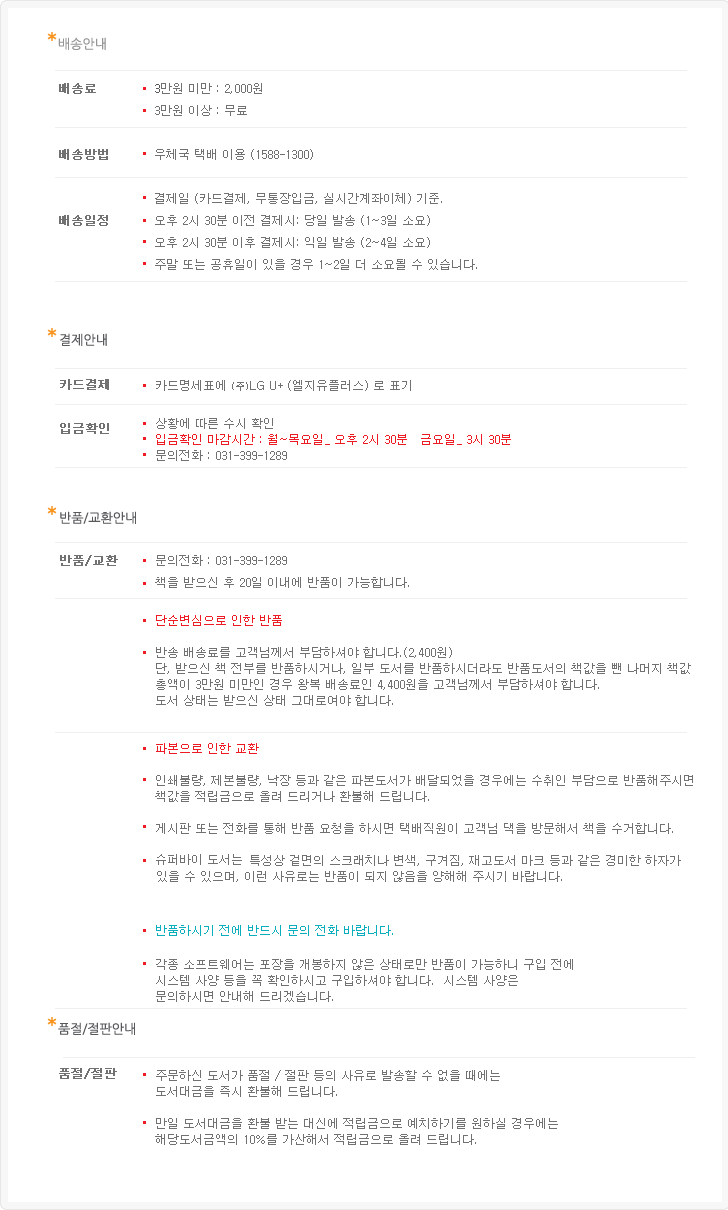|
|
|
|
|
|
|

| 최근 이 책을 구매하신 다른 회원의 책장 |
|
 |
|
|
|
[ 책 소개 ]
Mama, Do You Love Me?의 저자인 Barbara Lavallee의 아름다운 세밀화 그림이 돋보이는 책입니다.
세계 각 지역의 독특한 자연환경과 그 속에서 적응하며 삶의 터전을 이루고 살아가는 다양한 동식물들에 대해서 배울 수 있는 Imagine Living Here 시리즈입니다.
이 책에서는 마사이족의 고향이며 기린, 코끼리, 얼룩말, 사자, 코뿔소, 고릴라 등 거대 포유동물들이 지구상에서 가장 많이 살고 있는 동아프리카 지역의 동물과 식물들, 그리고 그 곳에서 자연과 조화를 이루며 살고 있는 인간들의 생존 방법을 아름다운 그림과 함께 소개합니다.
아프리카에서 가장 높은 킬리만자로산과 아프리카에서 가장 넓은 빅토리아호수가 있는 동아프리카 지역은 적도가 지나고 있으며, 건기와 우기가 뚜렸한 넓은 초원지대가 펼쳐져 있습니다. 이 지역에 사는 수많은 동물들의 종류와 특성, 먹이 사냥, 인류의 최초 조상이 살았던 고고학적 유골과 유물들, 원주민인 마사이족들과 동물들의 공존 방식, 개발과 환경보존의 문제 등 다양한 내용들을 아름다운 그림과 함께 쉽고 재미있게 설명해 줍니다.
[ 서지 정보 ]
Edition: Paperback, 32pages
ISBN: 0802775799
책 크기 : 25.4cm x 21.5cm
[ 영문 서평 ]
Book Description
Join Vicki Cobb and Barbara Lavallee on an exciting safari adventure into the Masai Mara of Kenya and Tanzania, home to more large mammals than any other place on Earth. It is a challenge to balance the needs of wildlife with the demands of civilization, but Cobb and Lavallee introduce us to people committed to living in harmony with the land - from Masai farmers to the promoters of eco-tourism. The newest entry in the Imagine Living Here series (This Place Is Cold, This Place Is Wet) continues to explore the ways that geography impacts upon culture throughout the world.
Children's Literature
To put together the publisher's "Imagine Living Here" series (other titles include This Place Is Cold: Alaska; and This Place is Wet: The Brazilian Rain Forest), Cobb and Lavallee actually travelled to different parts of the world so that their readers might do likewise in the pages of the books. Here the text and cheerful, detailed illustrations take us on an exploratory journey in East Africa. We meet lions, primates, gorillas, and more. We peek into a traditional Masai community. We get a glimpse of a past in which game and the hunting of it dominated European contact with this region of the world.
School Library Journal
This accessible but flawed introduction to the animals of East Africa also offers a brief view of the Masai people who live in close proximity to these wild creatures. Soft colored illustrations are pleasing to the eye. A scene depicting poachers de-tusking a downed elephant is quite poignant and might lead students to seek out the whys, hows, and evils of poaching. A well-thought-out map shows readers exactly where the action takes place. There is no glossary but new words and concepts such as "pronking" and "ecotourism" are explained in the text and listed in the index. There is cause for some concern, however. Lions are misleadingly referred to as "lazy." Calling the marabou stork "ugly" is subjective. Perhaps most disturbing is the sweeping generalization Cobb uses when claiming "the Europeans killed for sport." All Europeans? There is little place for stereotyping in today's science writing for youngsters. Beyond that, Wild might be helpful when used with Caren Stelson's nicely photographed Safari (Carolrhoda, 1989), which includes further data on the lifestyle of the Masai. |
|
|
|
|
 |
제품상제정보 배송/반품/교환 안내 |
|
|
|
Super Buy 도서는 미국 출판사의 재고도서(Remainder Book), 초과출간도서(Excess Inventory), 할인도서(Bargain Books)
등을 직수입해서 정가의 55%~80%를 할인한 가격에 판매하는 제품입니다.
Super Buy 책의 품질은 거의 새 책과 같은
수준이지만, 간혹 커버의 스크래치나 접힘과 같은 하자나, 책 하단의 재고도서 마크가 있을 수 있습니다.
저렴하게 판매하는 Super Buy 제품의 특성상 반품이 되지 않습니다만, 파본인 경우에는 착불로 반품하시면 책값을
환불해드리거나 적립금으로 올려드립니다. (반품 전에 연락 요망)
하프프라이스북에서는 중고도서(second hand book)를 취급하지 않습니다.
|
|
|
 - 등록된 128,139건의 서평이 있습니다. - 등록된 128,139건의 서평이 있습니다.
| 더보기 
|
|
|
|
|
|
|
 |
|
|
|
| |
| |
|
|
Vote!
An ALA Notable Chi..
3,900원 | | |
| |
|
|
Wind
Ready-To-Read, Lev..
2,200원 | | |
| |
| |
|
|
|
|
|